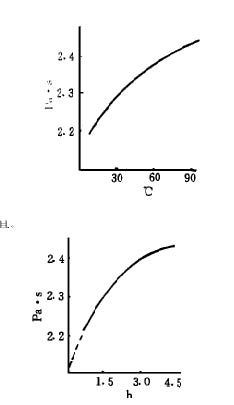0 Preface 1 Experimental section 1.2 Production Process A quantitative amount of polyol, trichloroethylene, and triethanolamine are added to the synthesis vessel, and the reaction vessel is heated to 80° C. with stirring under the steam valve. The quantitative MDI is then added to the synthesis vessel in batches for reaction. After MDI was added, the reaction was continued at 80° C. for 3 hours to obtain a finished product with a viscosity of 2.4 Pa·s. (Note: This article refers to the viscosity measured with a rotational viscometer at 20°C.) 2 Results and Discussion Hardcover Book,Paperboard Book,Book Printing Book Printing Notebook Printing Co., Ltd. , http://www.qiuyu-envelope.com
There are as many as 100 types of adhesives on the market today. All kinds of adhesives have their own special purpose of bonding. However, adhesives for plastic products are still new varieties that have just been put on the market.
Adhesives for plastic products are adhesives based on adhesive rubber particles and resin particles. Its adhesive effect is obviously better than other adhesives, so that the adhesive products have good elasticity, shear strength and tensile strength.
Plastic carpet is a type of ground decoration that people love in recent years. It is also a typical plastic product. This kind of floor decorations has the characteristics of beauty, mobility, easy cleaning, pollution resistance, sound insulation, shock absorption, heat preservation, abrasion resistance and durability. The special glue needed for the production of such carpets firmly binds the rubber particles. This adhesive is not yet produced by domestic manufacturers and therefore needs to be imported.
In response to the technical assistance for a Chinese-foreign joint venture that produced plastic carpets in Guangdong, we specially developed and produced this adhesive, ending the situation in which the company relied on imported adhesives to produce plastic carpets, and ended the history of not producing such adhesives in China. Each year not only can save a lot of foreign exchange for the country, but also significantly reduce the production cost of plastic carpets, creating extremely favorable conditions for promotion and application in the domestic market.
This adhesive-bonded plastic products are widely used in advanced sports fields, casinos, children's amusement parks, sidewalks, soundproof walls, cushioning materials, etc. [2]. It is also possible to directly make various required products on the construction site. When laying a plastic surface, the glued plastic material can be flattened. The road surface laid in this way not only saves time and material, but also makes the road surface have good mechanical strength and elasticity, and is durable and is an excellent substitute for asphalt pavement.
The adhesive can be used more widely with different curing agents.
1.1 The main production equipment and raw materials The main production equipment is 0.1m3 synthetic kettle and vacuum pump.
The main production of raw materials MDI (industrial products), polyols (industrial products), trichloroethylene (industrial products), triethanolamine (industrial products).
2.1 Selection of reaction temperature
The reaction temperature is an important process parameter. The level of temperature directly affects the quality of the product, thereby affecting the performance of plastic products. When synthesized at high temperature, the viscosity increases significantly. In severe cases, it can reach a semi-cured state. According to the requirements of plastic products and the actual conditions of application, it is advisable to control the viscosity of the adhesive in the range of 2.3 to 2.6 Pa·s. This viscosity product allows plastic products to have good mechanical properties and elasticity. The production practice shows that when the reaction temperature is controlled at 80°C, the adhesive has a viscosity of 2.4 Pa·s. The relationship between viscosity and temperature is shown in Figure 1. 
2.2 Determination of reaction time The reaction time has a great influence on the quality of the adhesive. As the reaction time increases, the viscosity increases. Appropriate reaction times can give the best viscosity. Figure 2 shows the relationship between reaction time and viscosity. Practice shows that the reaction time is controlled at 3h. When it is in a semi-cured state. According to the requirements of plastic products and the actual conditions of application, it is advisable to control the viscosity of the adhesive in the range of 2.3 to 2.6 Pa·s. This viscosity product allows plastic products to have good mechanical properties and elasticity. The production practice shows that when the reaction temperature is controlled at 80°C, the adhesive has a viscosity of 2.4 Pa·s. The relationship between viscosity and temperature is shown in Figure 1.